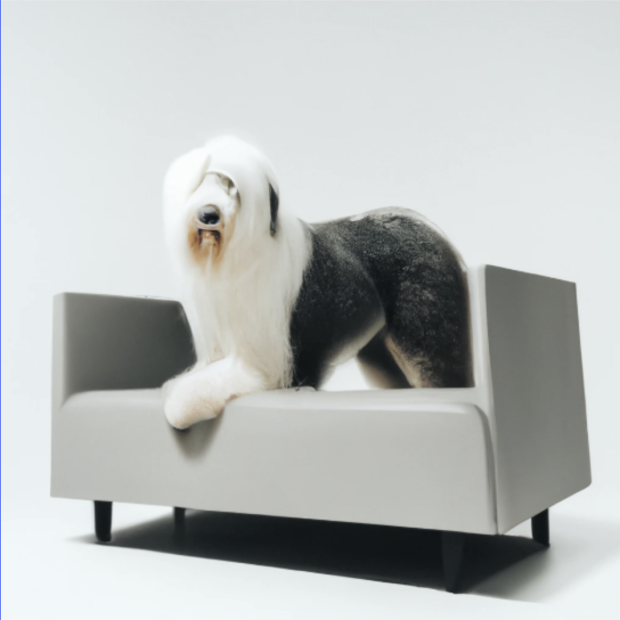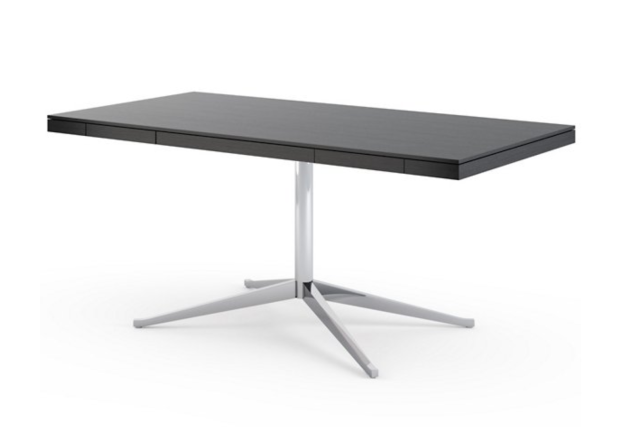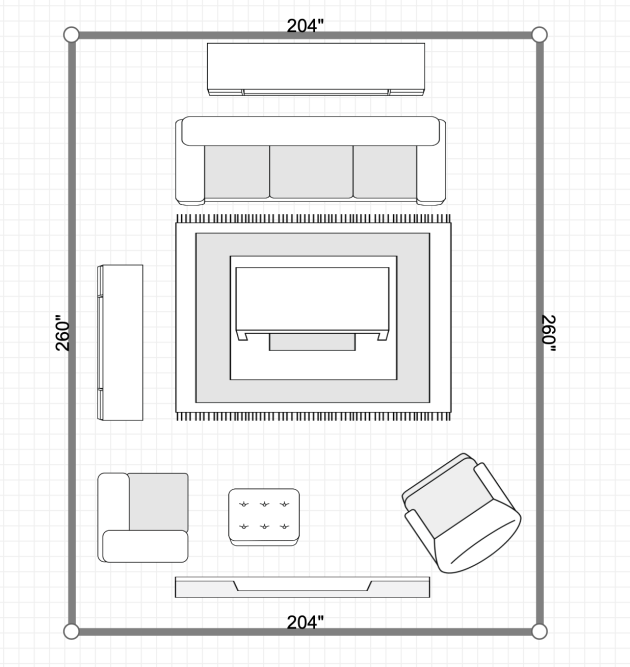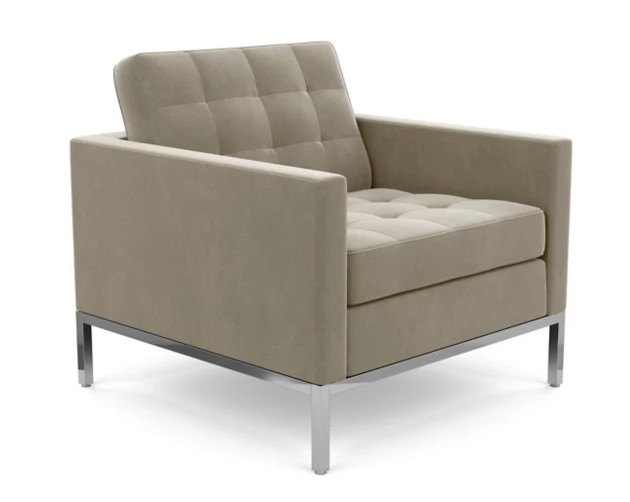
His name was Cartree, and the shaggy Old English Sheepdog was absolutely beloved.
He typically accompanied his mistress, Florence, to work where he would sprawl out on the floor, a hairy and very stark contrast to the sleek, minimalist furniture around him.
If for no other reason, the friendly galumph was loved for being the perfect antithesis of the emerging Bauhaus style of the times in which he lived, the 1930s. Cartree might as well been one of Florence’s appendages, he was such an integral part of her. He became the de facto company mascot for Knoll Associates, the company his mistress had founded and built up, and he would eventually appeared in many of Knoll’s catalogues, brochures and advertisements.
Cartree likely thought nothing of it, but there were plenty of people who would liked to have been in his paws. You see, Cartree’s person, Florence, was – and still is – an important icon in her field. Allow us to explain.
The table below would probably not get a second look from you, but in the 1930s, it was ahead of its time, and Florence designed it. When she couldn’t find a desk to suit her, she designed the darn thing herself. She thought that an executive’s desk should facilitate communication, not get in the way of it, so Florence designed “Model 2485” to work as both a desk and a table in order to promote collaboration. An original today will cost you a cool $14,856.00.

Have you ever seen a design like the one below? Of course you have! They are common tools for interior decorators and designers. We designed the one below in about a minute using an on-line app. Here’s the thing……

What you see above is called a “paste up:” Small representational plans of a space usually shown with fabric swatches, wood chips and finishes attached to represent furniture and other details. An architect by training, Florence brought the concepts of exterior design inside the building, and until Florence, paste ups had only been used for drafts of mechanical flat art. She became the first person to use the method to design an interior.
The method was integral for what Florence was trying to convey to clients who were squeamish about adopting a new aesthetic. Showing colors and textures put a human side to Florence’s modernism, essential to her company’s designs. Until Florence, a revivalist style was popular, a style we would consider dated and old fashioned – and yes there was art deco and art nouveau, but Florence ushered in a new American design aesthetic. She championed practicality and simplicity over ornateness, and her ideas not only set the tone for the rest of the decade, but the entire century. A chair like the one below would fit right in today, but Florence designed it in the 40s.

This one will cost you $10,212.00
Florence and her Knoll Showrooms helped sell the public on modernist design, and she was instrumental in introducing the work of other designs, such as the famous tulip chair. From our point of view, we think that her Old English Sheepdog helped. Cartree enchanted everyone, especially Herbert Matter who used the fluffy dog in company marketing material. Cartree also appeared in Vogue and The New Yorker magazines, and he was more than happy when his picture was taken and he was the center of attention. We came across an anecdote of when the illustrator and artist Saul Steinberg suggested to Florence and her husband, “You should buy him a zipper so he can take off his coat when he comes in the house.” The writer and curator, Peter Blake, also remembered a Cartree story: After giving Florence’s husband, Hans, a sheepskin coat from his travels throughout Europe, Blake recalled later seeing him in the coat while walking Cartree. As he remembered it, the pair struck him as two dogs walking down the street.
